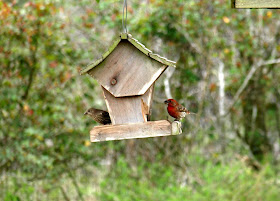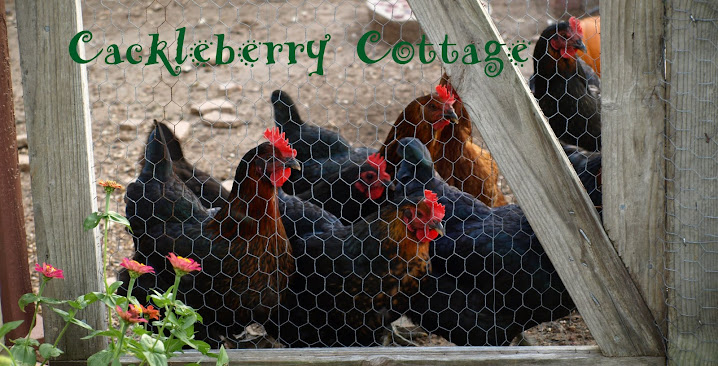 Dave spotted the first House Finches that we have ever seen this morning.
Dave spotted the first House Finches that we have ever seen this morning. As usual in the bird world, the male is brightly colored and the female is plain and drab. My bird book states that "studies indicate that the redder the male's plummage, the more desirable he is to females." Also, House Finches were "originally confined to the West, this finch was called Linnet and intorduced as a cage bird on Long Island, New York, in the 1940's". Smithsonian Handbooks Birds of Texas-Fred J. Alsop III.
As usual in the bird world, the male is brightly colored and the female is plain and drab. My bird book states that "studies indicate that the redder the male's plummage, the more desirable he is to females." Also, House Finches were "originally confined to the West, this finch was called Linnet and intorduced as a cage bird on Long Island, New York, in the 1940's". Smithsonian Handbooks Birds of Texas-Fred J. Alsop III.Y'all come back,
Lorilee

They are so pretty! We don't get those here in SW Va. My daughter had one at her feeder in Atlanta a couple weeks ago.
ReplyDeleteWe have them year-round here in Northern Nevada.
ReplyDeleteThat male is very handsome! Bet the girlies flock to him! :)
What cute birds! I don't think I've ever seen them around my part of the woods.
ReplyDeleteI don't recall seeing them here either.
ReplyDeleteThe finches regularly come to my yard. And so do the wrens and sparrows and chickadees. And MANY other birds. I practically have an aviary here. They are gorgeous birds, aren't they?
ReplyDeleteBrenda
Very cute little birds and sweet little houses. I love to watch the birds munch happily away on their food..and build their nests.
ReplyDeleteThey sure are pretty. It's so good to see more and more birds in our garden. Mimi
ReplyDeleteI've never seen one of these birds. I'll be looking for them now. I've read that in most animals the male is more highly colored than the female as a way to attach predators away from the female. Makes sense to me! I guess that's why men can get by with no makeup.
ReplyDeletenever have seen one before...they're adorable!!!
ReplyDeleteWe have lots of finches here, but I've yet to see one so red. Enjoy them!
ReplyDeleteI didn't know those were house finches! We've had a red one at our bird feeder at the lake and I couldn't quite figure out what he was. Now I know!
ReplyDelete